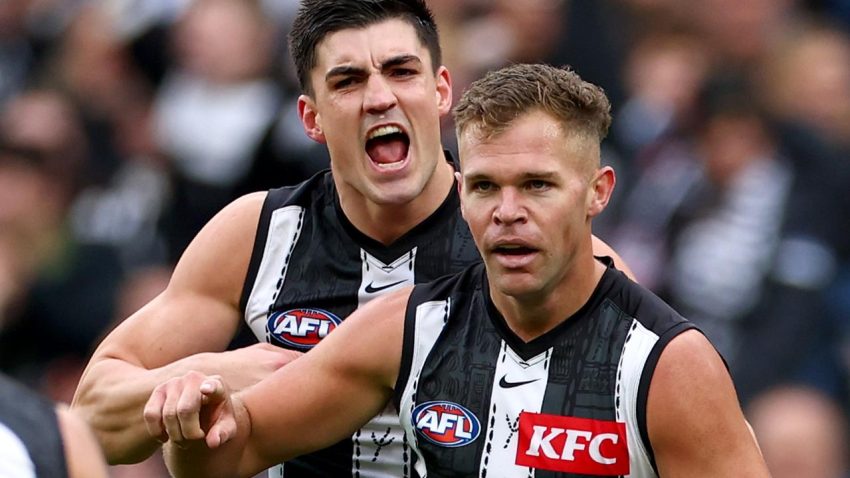Collingwood has continued its near-decade-long dominance over Kuwarna (Adelaide), prevailing 11.12 (78) to 10.8 (68) at a wet and chilly MCG to claim its eighth win of the season and temporarily take top spot on the ladder.

Two of the league’s most in-form teams did battle at the MCG on a wet and chilly Saturday, and the Pies won the slog, getting enough forward reward despite losing the inside-50 count by eight.
The Magpies have now won their last 10 games against the Crows, who haven’t beaten Collingwood in nine years, and the last five of those victories have been achieved by an average margin of four points.
For almost three quarters, the match was a seesawing contest that produced eight lead changes.
The Crows had multiple chances to get back in front in the third period, but squandered a host of set shots, including a pair from Izak Rankine that went out on the full.
After Jake Soligo finally gave them back the lead, the Magpies ramped up the pressure and blitzed Adelaide for inside-50s, kicking the next four goals to lead by 23 points early in the final term, as they ran Adelaide off their feet.
It looked like the Crows were done, but with three of the last four goals, they got back within nine points with 2:43 to go after getting back on top in the territory battle.
However, they weren’t able to complete the job, going down by 10 points in front of 67,697 fans, which is a record home-and-away crowd for a match between these two clubs.
Like they did last week, Collingwood lost the inside-50 count 47-55, but without captain Darcy Moore, led by Jeremy Howe, their defence held up brilliantly again.
The 3-2-1 (what we learned) …
3. PIES’ ‘RISKS’, DARING MINDSET STYLE CAUSE ‘PANIC’
Collingwood lost the territory battle for the second consecutive week with Darcy Moore out of the side, but it was its ability to be punishing off turnover and daring with its ball movement that propelled it to victory.
The Magpies entered Round 10 third in the competition for scoring off opponents’ turnovers, and that strength came to the fore on Saturday.
The Pies set the tone from the outset, going +12 for scores from turnover at quarter-time.
They were also plus-nine for contested possessions and plus-five for clearances but recorded one fewer inside-50 than the Crows.
“This is where Collingwood are at their most dangerous,” four-time premiership player Jordan Lewis noted on Fox Footy as the Pies capitalised off a Kuwarna error. “When they can take ground by hand and really force the defence to be unsure.
“Do you (the Crows) come up, do you apply front-on pressure which allows them to keep going, and do you get it right?
“We see here, the turnover centre-forward, and then Collingwood players just swarm, they get inside the contest, then they get it on the outside, then they make really good decisions. Handballs going forward, taking ground.”
By half-time, the Magpies had kicked 6.4 to 5.0 from intercepts.
The Pies’ ball movement and desire to use the corridor also caught the eye of Lewis.
“I think 80 per cent of teams in the competition would put that (long kick) closer to the boundary, maybe 10 metres inside the boundary. But this Collingwood side is prepared to be a little bit more aggressive with their ball movement out of their back half.
“And it is in direct line with goal, so one, it becomes predictable to the forwards further down the ground, but it just gives you more of a chance to score.
“If it’s closer to the boundary, you are hampered in a way, (but) if it’s more towards the corridor with a little bit more risk, you’ve got more room to move.
“You make the defence panic and give yourself an opportunity.”
Collingwood finished with eight fewer inside-50s for the match, but its corridor-threatening style meant it got better looks going forward — going at an almost eight per cent better clip for forward-50 efficiency than the Crows.
The defensive efforts of Jeremy Howe and acting skipper Brayden Maynard also can’t be overlooked, with the pair combining for 19 intercept possessions.
Josh Daicos added 11 of his own as the smooth-mover’s back-half role continues to pay
